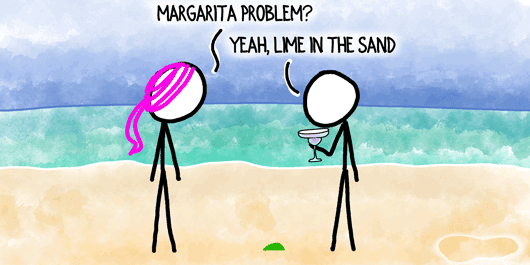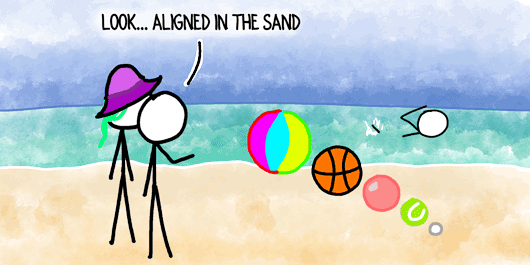Your consulting firm faces many difficult decisions—times when you need to metaphorically draw a line in the sand and vow, “If we reach this line, we change directions” or “If we cross this line, we go all-in” or “Even if we draw the line in a circle, we will not smirk and call it a sand donut.”
Your clients must also draw lines in the sand, and identifying those will materially help you grow your consulting firm.

Your challenge as a consulting firm leader often is not whether to draw a decision line—but where to draw the line.
For instance:
- At what point should you abandon an idea that hasn’t met expectations versus persist just a bit more to achieve success?
- At what point should you take the plunge to hire a(nother) employee versus use contract labor versus push your current team to work a bit harder?
- At what point will augmenting a process improve your consulting firm’s performance versus make the process unnecessarily burdensome?
- At what point should you focus your consulting firm’s limited resources on expanding inside current clients, which delivers high ROI and fast wins, versus finding new clients, which consumes more time and money while reducing portfolio risk?
Similarly, you prospects and clients need guidance on where to draw the line. That’s why they pay handsomely for benchmarks, gobble up guidelines and press your consulting firm for specific experience.

Clients often know the overall framework for a decision and the criteria on which to base their actions. Still, they’re stressed and seeking reassurance over when to flip the switch. Examples include:
- When to hire or to fire an employee.
- When to shut down a division.
- When to add a product feature, change pricing, shift markets, or include a team on an initiative.
Of course, when prospects are talking with your consulting firm, their most immediate decision is whether or not to hire a consultant.
Help them find that line too:
What’s the clear indicator of whether or not your prospects need outside help?

Take a bit of time and perhaps conduct some research to uncover the lines in the sand that your clients are unsure where to draw.
You’ll increase your consulting firm’s attractiveness and value immensely when you expertly direct the placement of those lines; when you offer your clients guidance on when and where to make hard decisions.
What are some of the lines in the sand you currently help your clients draw?
Text and images are © 2024 David A. Fields, all rights reserved.

 David A. Fields Consulting Group
David A. Fields Consulting Group 

In some cases the answer is clear-cut, and in others it takes some work before arriving at the best decision. Using one hard and fast rule for everything across the board might come back to bite you
That’s very true in some cases, Benjamin. Of course, having that knowledge about the lines your clients are trying to draw makes your consulting firm that much more valuable. When you can say, “There are actually three different trigger-points for this decision, depending on the situation…” you’re demonstrating even deeper expertise.
Thanks for sharing your thoughts, Benjamin!
I coach clients to turn down work!! Clients and projects that you once took on are now too small for your current and future business. You have to raise the line/bar for minimum-sized projects and clients as they take up too many resources and time for not enough margin. Clients need to let go of the past-sized engagements to grow and capture their future-sized engagements.
This is a line I am just drawing for myself!
Congratulations, Tim! Michael’s exercise is well worth conducting at least once per year. Implementing that new, higher threshold, has been part of the magic in transforming many small consultancies into 7-to-8-figure boutiques.
Fabulous example, Michael. One great element of that particular idea is that where the line is drawn differs between clients and also changes for each client over time. That makes finding the right spot all the more difficult, and your advice all the more precious.
I appreciate your adding a case study, Michael!
Sometimes clients are trying to use traditional approaches to new problems. I worked with a Baby Bell phone company trying to ramp up a new cellular division in the early 2000s. They were trying to apply a monopoly mindset to what was essentially the wild west, gold rush to find and keep cellular customers. I could not shake them out of the monopoly mindset and the division was sold later in the decade.
Sometimes clients want to stay on their side of the line in the sand.
Hire when it hurts and not before.
Fascinating case study, Jay. (Also, it dates you!) You’re absolutely right that even when you point out the line and underscore the importance of crossing it, some clients are resistant. Fortunately, they’re your clients not your employers. 😊
Your rule of thumb for hiring is very fair for some situations. For certain consulting firms, especially in expanding markets with limited talent available, hiring in advance is preferable. Setting that aside though, the “when do we hire?” line is very difficult for many clients to find. Good on you for telling your clients how to locate it.
Excellent additions to the conversation, Jay.